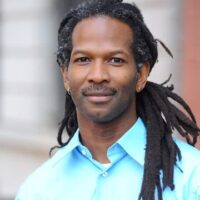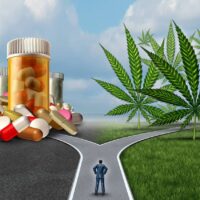UPDATE: Prof. Madras Defends US Government Position on Marijuana Scheduling at Court Hearing in Sacramento
 October 29 – Dr. Bertha Madras will take the stand today in federal court in Sacramento to defend her 36-page declaration (augmented by footnotes and a lengthy resume), arguing that marijuana should remain in Schedule One (no accepted medical use; high potential for abuse). Read more.
October 29 – Dr. Bertha Madras will take the stand today in federal court in Sacramento to defend her 36-page declaration (augmented by footnotes and a lengthy resume), arguing that marijuana should remain in Schedule One (no accepted medical use; high potential for abuse). Read more.
Excerpts from her testimony:
Starting in the 19th century, chemists began to isolate pure chemicals from medicinal plants, study them, and make safer variants: the active drugs morphine from the opium poppy, cocaine from the coca bush, digitalis from the foxglove plant, salicylic acid (converted to aspirin) from willow bark, ephedrine from the Ma Huang plant, and quinine from cinchona bark were isolated (or, at times, further modified). Behind this new science was the dawn of rational development of medications. Chemists and physicians reasoned that it was wiser to isolate a pure compound from a plant, remove it from other chemicals and contaminants that may be toxic or interfere with its actions, and administer a pure drug of known quantity, in a safe dosage range.
Although more than 30% of current therapeutic drugs are plant-derived, no one currently eats or smokes foxglove plants to treat a heart condition, chews cinchona bark to alleviate malaria symptoms, or eats opium poppies to relieve post-surgical pain. Instead, scientists have isolated compounds, identified safe and effective dose ranges, and developed medicines from these plants to treat these conditions. It is as irrational to smoke marijuana for medicinal purposes in the 21st century as it was to chew bark to relieve a headache or smoke opium for pain in the 20th century.
Standard medicines are not smoked, but enter the body in many other ways (pill, injection, topical creams, patches, inhalants, eye drops, suppositories, etc.) with the amount entering the blood stream evaluated in clinical trials and doses carefully chosen to account for rate of entry.
At this time, there are insufficient high quality clinical studies to ensure the safe and effective use of marijuana as medicine. Also, contrary to modern medications, marijuana is a complex mixture of hundreds of chemicals of unknown concentrations, pharmacological effects, and side-effects, and is delivered mainly by an unacceptable route of administration: smoking. It thus has no currently accepted medical use.
It is now known that mechanisms of action of intoxicant THC and the non-psychoactive CBD are distinct; CBD can oppose some of the memory and behavioral impairment of THC, CBD does not impair memory as does THC, and their therapeutic indications may differ. This compelling evidence supports the need to continue the process and methodology of modern medicine with respect to the marijuana plant. The evolution of marijuana research is following the same principles as drug therapies in general, following the discovery of its active chemicals in the early 1960’s. Science should continue to isolate pure cannabinoids in the marijuana plant and evaluate them separately to determine whether they have medicinal value, all through an evidence-based process designed to protect patients and the general public.
It makes you wonder if it’s possible that the side effects seen in pharmaceutical drugs are a direct result of isolating them away from the constituents that occur naturally in the plants from which they were derived? And if oral administration leads to nausea so often seen with pharmaceuticals? If CBD mitigates some of the effects of THC, might there be other compounds in whole plants that do that same?
Recent studies show that polyphenols in willow bark may contribute to its pain-relieving properties, rather than just salicylic acid derived from that natural substance (and put into aspirin). Similarly, some are saying terpenes in cannabis, not just cannabinoids, have medical properties.
In her section about negative effects of cannabis and abuse potential, Dr. Madras writes:
As an example, the prevalence of a marijuana (cannabis) use disorder among persons who initiate marijuana use at age 14 or younger (13.2%) is six times higher than those who initiate marijuana use at age 18 (2.2%) or older (NSDUH 2013). Marijuana is addictive in approximately 9-10% of users and 25-50% of daily users become addicted. It should be apparent that people who use marijuana for chronic conditions will use it daily and over an extended period, and are thus at high risk for addiction.
The validity of marijuana withdrawal has been demonstrated in preclinical, clinical, and epidemiological studies. Marijuana withdrawal is reported by up to one-third of regular users in the general population and by 50%–95% of heavy users in treatment or research studies.
It is true that marijuana is not as likely to cause death by overdose as other scheduled substances, but it is still a dangerous substance for brain, body, and behavior.
This does not mean that policy makers could not choose a different outcome, and determine that the risks and consequences of marijuana abuse are outweighed by other factors. See, e.g., 21 U.S.C. § 802(6) (alcohol and tobacco exempted from Controlled Substances Act); see also U.S. Const. Amend XXI (repealing prohibition on alcohol).
The diagnostic and statistical manual of Mental Disorders (“DSM”) of the American Psychiatric Association has designated that marijuana is addictive, and currently recognizes a specific Cannabis Dependence (Use) Disorder. (See DSM-IV, § 304.30, and DSM-V).
Of course, the DMS included homosexuality as a mental disorder from 1952-1974; Dr. Carl Hart stunned the court on Tuesday with his testimony that the newest version of the DSM, the DSM-V, explains that tolerance and withdrawal from cannabis are “normal symptoms to be expected of legitimate medical cannabis use” in states where it is legal. (This point was later expanded upon by the testimony of Dr. Philip Denny, another expert witness for the defense.)
Dr. Madras managed to find one of the few studies that don’t show positive effects from cannabis for cancer patients with severe nausea. She writes:
In addition, the only indications for medical use of marijuana offered by its proponents have been for chronic conditions (e.g. AIDS neuropathy, AIDS wasting, multiple sclerosis, chronic pain), but I am aware of no long term studies examining the effects of chronic marijuana use among people using marijuana for medical conditions, with particular voids in long term progression to addiction or cognitive impairment. Until reliable research into the long-term consequences of chronic marijuana for asserted medical conditions is conducted, it is too soon to know what users are being exposed to. (How about the IND program?)
Madras also rebuts some of the statements in declarations submitted by Drs. Gregory Carter and Philip Denney.
Madras’s resume says she served on the U.S. Department of Education’s Safe and Drug-free School Advisory Committee (2007-2008) and that she “Educated school officials on random student drug testing according to two Supreme Court rulings ; outreach led to highest number of school applications in RSDT (Random Student Drug Testing) program history.” Also under the heading “Drug-free workplace” she says she somehow, “Increased the number of sites with prevention policies and programs by over 3 million person-reach and increased the percentage of person reporting they had access to educational information about drug and alcohol use in the workplace.”
NORML Legal Committee attorney Zenia Gilg will cross-examine Madras this afternoon and tomorrow morning (Thursday, Oct. 30).
Also see: Day Two of Scheduling Hearings: Drs. Carl Hart and Philip Denney Take the Stand
Day One Testimony in Federal Marijuana Rescheduling Hearing: Dr. Greg Carter



